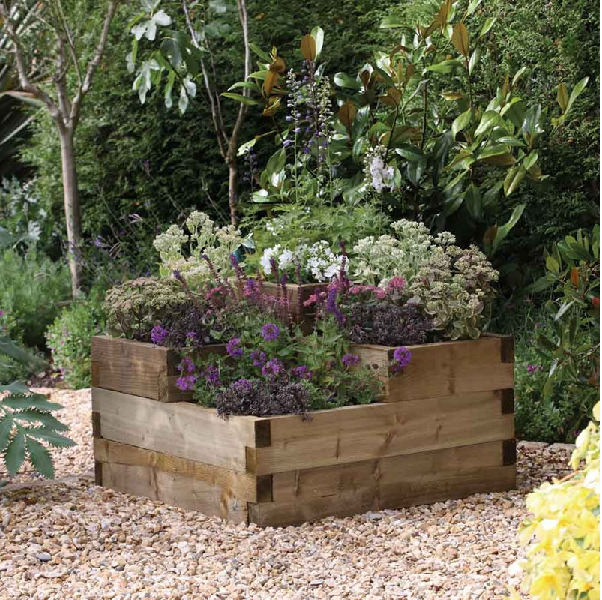
A raised bed garden patch raises one immediate concern for gardeners: unsuitable soil in an otherwise suitable location. Sometimes, it is the only option gardeners will have because of this or other pressing issues like rental properties being unsuitable for gardening. So, what is a raised bed garden and how can gardeners get started with one? Let's have a look.
Raised Bed Gardens
A raised bed garden is an elevated surface, much like an open top box, that allows gardeners to position their ideal garden in an area that suits their personal tastes or requirements. They're particularly suitable for those who are otherwise afraid of digging up their own lawn or don't have the necessary permission to do so. It also benefits those who are gardening from poor soil sites because topsoil high in organic matter can be added to the mix from the very start.
However, depending on the design of the box, they're not particularly well geared towards those with complex or deep root structures. This is because raised boxes don't tend to be elevated to very high positions. While they can indeed be built to any particular size required by the gardener, the largest and deepest of designs don't tend to be very aesthetically pleasing to the eye. For this reason, raised bed gardens tend to be quite lowly elevated.
Choose Your Wood
The construction of a raised bed garden is relatively simple and only requires simple slabs of wood, like 4 x 4 x 8' timbers. The quality of the wood chosen will naturally determine how long the raised bed lasts. Extravagant designs of redwood will resist rot and decay, while cedar will provide a cost effectiveness that's second to none. It's really up to the gardener and what they choose for their own design.
Pressure treated lumber is particularly good for flowers, since these types of woods tend to stand up to the atmosphere a little better than natural woods. However, pressure-treated lumber is treated using various chemicals. This makes the wood unsuitable for fruits, vegetables, or other things meant for human consumption because the porous nature of wood will simply leech into the soil and consequently be absorbed as nutrients into the edible plant material.
Choose Your Site
South facing sites are usually the most appropriate selections for raised garden beds since they're usually exposed to at least six hours of direct sunlight every day. However, this is dependent on what gardeners intend to grow in their beds, and they should adjust the position according to the plant's needs. Those that require less sunlight should be positioned in shadier spots.

Hills pose a unique challenge since it's possible to position a raised bed on a slope. However, gardeners will need to level the site properly first and will be required to do some digging in order to position the bed properly to prevent it from becoming a mudslide. This is when gardeners will need to get into their shed and grab their heaviest shovel in order to get to digging! After all, it's probably one of the most labour intensive processes involved with establishing a raised bed garden.
Choose Your Soil
Soils that are rich in organic matter are obviously the most effective options to use in a raised bed, but aren't necessarily the most cost effective. Gardeners could therefore look towards using their own soils in order to help alleviate some of the costs associated with this. Garden soils can be difficult to use though: sand, clay, rocky, or alkaline soils all pose their own unique challenges. This is when creating a mixture of topsoil, organic matter, and native soils can prove to be an effective adjustment.
Choose Your Purpose
Raised bed gardens are perhaps one of the most versatile gardening options available. This means they serve a variety of different purposes from vegetable growing to herb gardening. However, it's important to choose a specialisation early, as different applications will require different types of soils, positions, and even woods. For this reason it's not unusual to see gardeners with more than one raised bed in order to accommodate two or more different requirements, where a more traditional garden would prove itself to be unsuitable.
